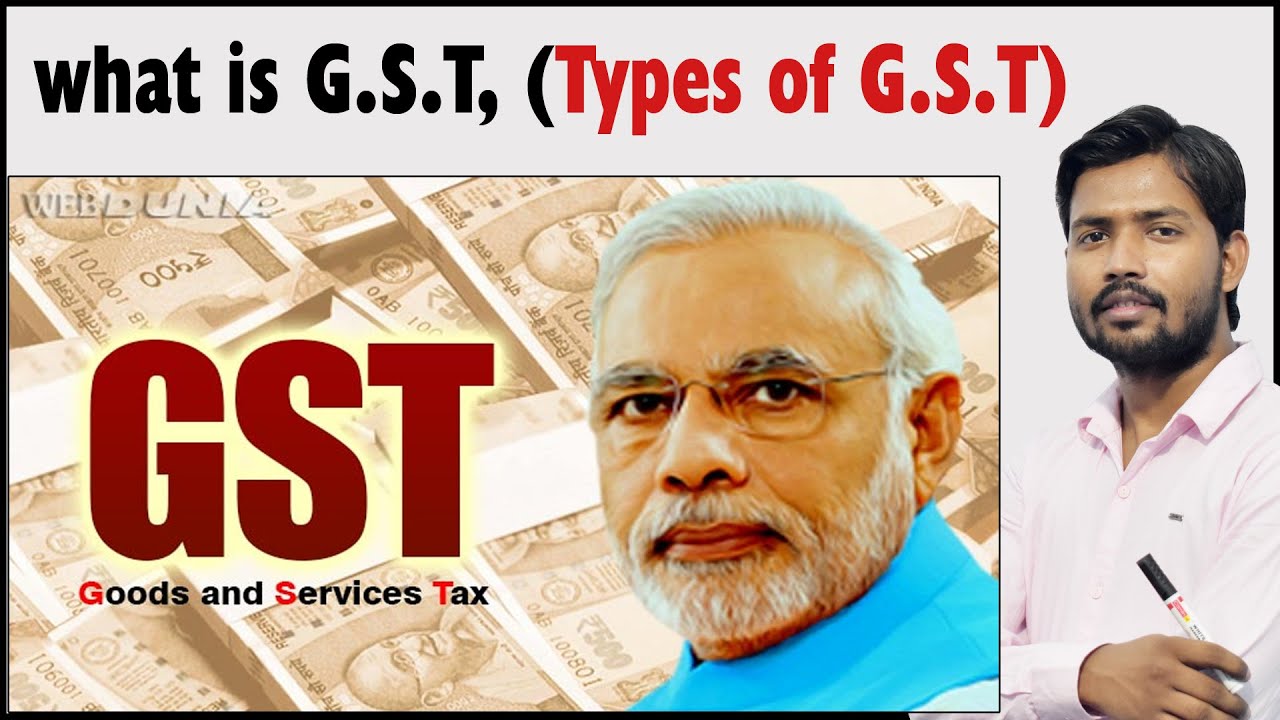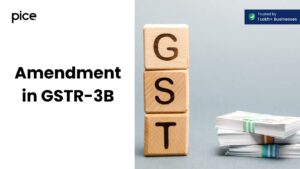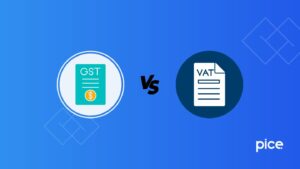What Are the Different Types of Registrations Under GST?
- 26 Aug 24
- 13 mins
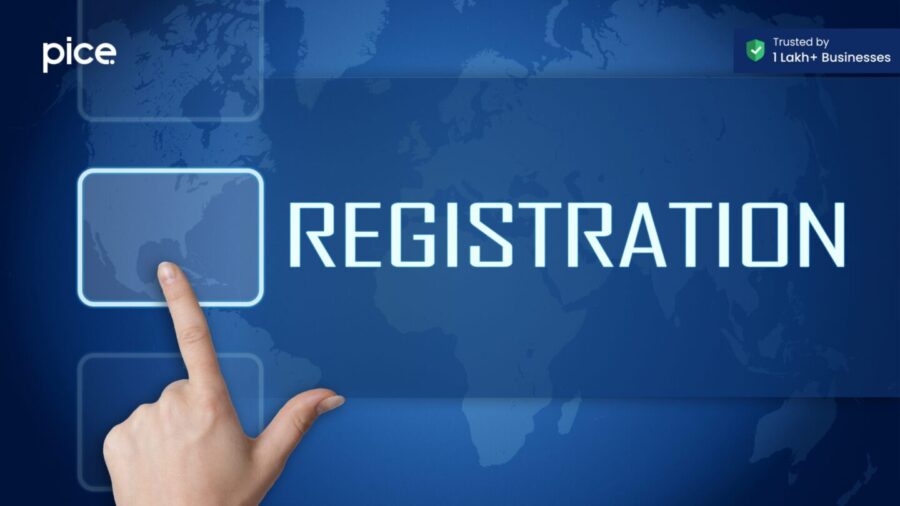
What Are the Different Types of Registrations Under GST?
- What Is GST ?
- Who Should Register for GST?
- What Documents Are Necessary for GST Registration?
- Components of GST and Its Explanation
- 8 Types of GST Registrations
- 1. Regular GST Registration (GSTIN)
- 2. Composition Scheme Registration
- 3. Casual Taxable Person Registration
- 4. Non-Resident Taxable Person Registration
- 5. Input Service Distributor (ISD) Registration
- 6. TDS (Tax Deducted at Source) and TCS (Tax Collected at Source) Registration
- 7. E-commerce Operator Registration
- 8. URD (Unregistered Dealer) Composition Scheme
- GST Registration Fees
- Conclusion
Key Takeaways
- Unified Tax: GST replaced multiple indirect taxes for a simplified tax system in India.
- Mandatory Registration: Businesses must register for GST if their turnover exceeds specific thresholds.
- GST Components: GST includes CGST, SGST, IGST, and UTGST, applied based on transaction types.
- Registration Types: There are eight GST registration types, each with distinct criteria and processes.
- Registration Fees: GST registration costs vary by business type and state, from ₹2,000 to ₹15,000.
GST registration is important for businesses to align with the Goods and Services (GST) Act, of 2017. It helps registered businesses pay their share of tax for operating businesses in India. This blog elaborates on what GST is, who should register, its components, and the types of GST registration processes.
What Is GST ?
Goods and Service Tax, introduced in India in 2017, is a type of indirect tax. It has been introduced in the Indian tax system to replace multiple other indirect taxes like Value-added Tax (VAT), excise duty, service tax and others. The introduction of GST ensures seamless collection and operational efficiency in the Indian tax regime. It further ensures a unified and simplified taxation system across the country for businesses with GST liabilities.
Who Should Register for GST?
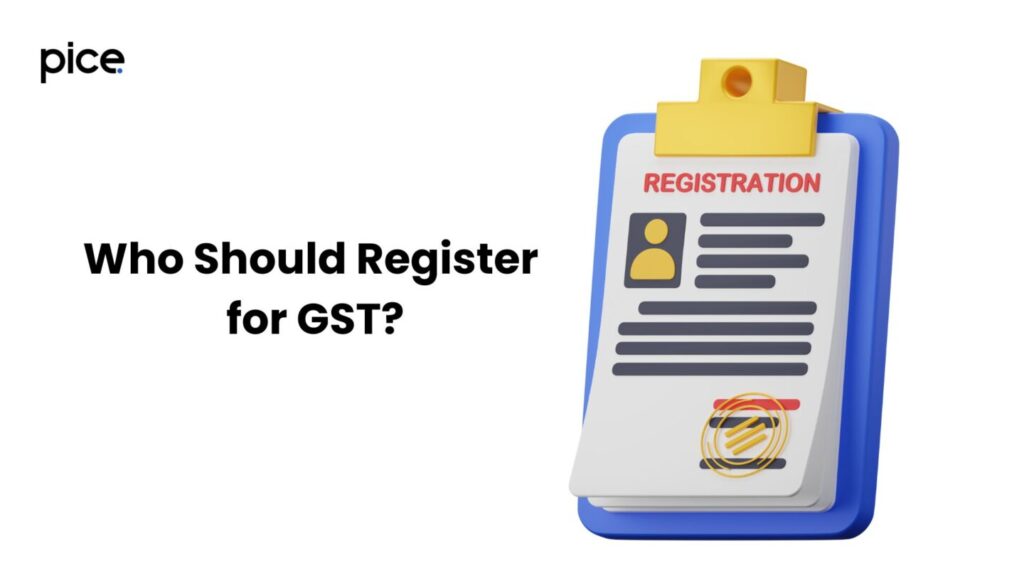
Businesses or suppliers of goods with a yearly turnover of ₹40 lakhs or above need to register for GST as regular taxable entities. However, the Northern and North-Eastern Indian states like Jammu and Kashmir, Himachal Pradesh and Uttarakhand are exceptions. Suppliers of goods in these states need to register for GST with a turnover of ₹10 lakhs or more under a special category.
In addition, service providers with a turnover of ₹20 lakhs or above need to register for GST under the GST Act 2017. The North-Eastern states, however, have an exception limit for GST registration with a ₹10 lakh turnover in the case of service providers under a special category.
Further, the following business types have to register for GST, irrespective of the turnover:
- Non-resident taxable person
- Input Service Distributors
- Inter-state goods and service suppliers
- E-commerce goods suppliers
- Service providers
- Businesses having tax liability under the reverse charge mechanism
- TDS/TCS deductors
- Online data retrieval or access providers
What Documents Are Necessary for GST Registration?
Here are the documents you need as a business for GST registration:
- PAN card of your business
- Certificate of Incorporation
- Identity proof of business partners or directors, such as PAN card, Aadhar card or Voter card
- Residential address proof of directors and partners such as Passport
- Statement of the business’ bank account or a cancelled cheque
- A declaration on the company’s letterhead signed by the authorised signatory
- Digital signature
Components of GST and Its Explanation
There are four GST components, namely Integrated Goods And Services Tax (IGST), State Goods And Services Tax (SGST), Central Goods And Services Tax (CGST) and Union Territory Goods And Services Tax (UTGST). Here are what the components are in detail:
What Is the CGST or the Central Goods and Services Tax?
Levied by the Central Government of India, CGST applies to intrastate goods and service sales. CGST replaces service tax, central excise duty, CST, SAD and customs duty as it comes under central taxes. It ensures a balanced resource allocation between the state and central governments in India.
What Is IGST or Integrated Goods And Services Tax?
IGST applies to interstate goods and services sales in addition to goods and service sales across international boundaries. As a result, the government levies IGST on imports and exports. The central and the state governments share the revenue generated from IGST. You can claim input tax credits where IGST applies.
What Is UGST or Union Territory Goods and Services Tax?
UGST applies to Union Territories such as Daman and Diu, Andaman and Nicobar, Lakshadweep, Chandigarh and others. It is a substitute for SGST in union territories. In other words, UGST applies to areas where there is no legislative assembly. The government levies UGST for the sales of goods and services in the Union Territories to collect revenue for developmental interventions.
8 Types of GST Registrations
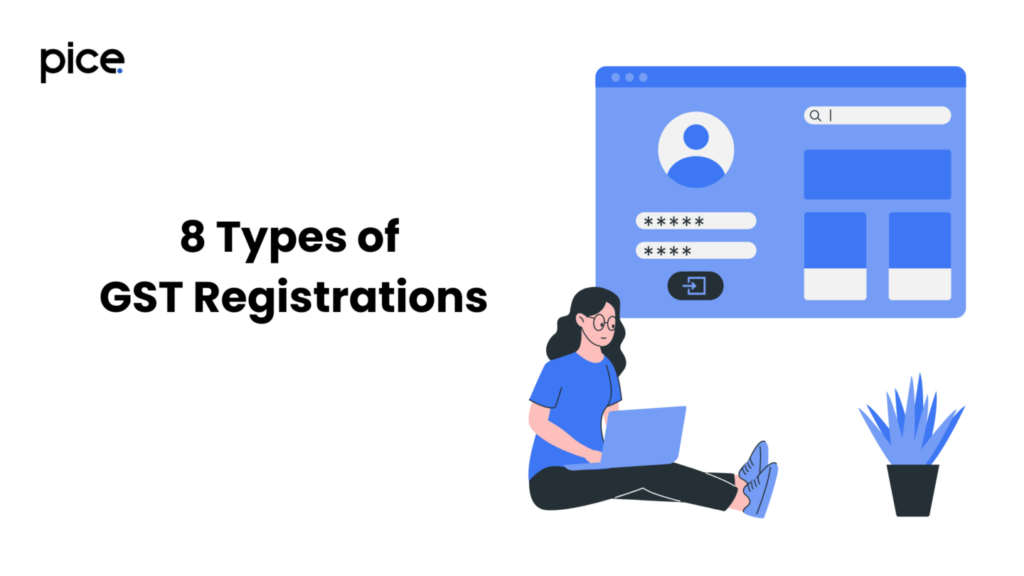
There are 8 types of GST registration processes. Here are the eligibility criteria, tax rates and application procedure for each type of GST registration process:
1. Regular GST Registration (GSTIN)
Regular GST Registration (GSTIN) is the standard form of GST registration in India, commonly used by normal taxpayers to engage in the unified tax system. It enables them to collect and remit GST, claim Input Tax Credit (ITC) and fulfil their tax obligations efficiently.
Eligibility Criteria:
- Suppliers of goods and services with a yearly aggregate turnover of ₹40 lakhs, ₹20 lakhs and ₹10 lakhs (special category) as applicable
- Interstate suppliers irrespective of the turnover
- Registration within 30 days of meeting the above criteria to avoid penalties
Tax Rates
The tax rate varies based on the type of goods and services. Here are the tax rates applicable:
- 5%: basic
- 12% and 18%: the second slab
- 28%: luxury and demerit goods
- NIL: food items, healthcare, and educational services
- Compensation Cess: tobacco and luxury cars
- Additional and special rates: gold and luxury metals
Application Process
The following is the process of GST registration online:
Step 1: The first step is to register yourself as a new user on the GST portal with proof of business registration.
Step 2: Fill in the GST REG-01 form by entering your business details.
Step 3: Enter the OTP you receive for verification.
Step 4: Complete the document uploading process.
Step 5: You will receive approval, GSTIN and a certificate from the tax authorities. On receiving the mentioned documents you can file your GST returns.
2. Composition Scheme Registration
Composite scheme registration allows a reduced tax rate for small business owners or regular taxpayers simplifying the taxation system. Learn about the eligibility criteria, and tax rates for this type of GST registration here:
Eligibility Criteria
- Small businesses having an aggregate turnover limit of less than ₹1.5 crore are applicable.
- Under Section 10 food and non-alcoholic beverage-serving restaurants, manufacturers and dealers are eligible for composite GST registration.
- Intra-state suppliers of goods and services alone are eligible.
Tax Rates
The tax rates are a percentage of the annual turnover in this type of GST registration. Here are the applicable tax rates:
- 1%: for traders
- 2%: for manufacturers
- 5%: for food and non-alcoholic beverage serving restaurants
Application Process
Here is the application process for composition scheme registration:
Step 1: Visit the GST portal, register yourself and log in using your user credentials.
Step 2: Fill in the GST CMP-02 form and enter details about your business.
Step 3: Receive the application reference number or ARN and approval from the tax authorities of India.
Step 4: Upon receiving the approval, you can proceed with GST return filing.
Notably, if you are moving from a regular GST registration to a composition scheme, you need to fill in the GST ITC-03 form.
3. Casual Taxable Person Registration
Casual taxable person registration applies to temporary GST registrations like fairs and exhibitions or events that are not permanently registered under GST. The following are the eligibility criteria, tax rates and application process for this type of GST registration:
Eligibility Criteria
- Temporary taxable suppliers of goods and services and business entities.
- Non-resident Indians engaged in business in India.
- Foreign entities engaged in Indian businesses.
- Temporary businesses conducting trade fairs or events.
Tax Rates
The tax rates are similar to the regular GST registration system. It includes 5%, 12%, 18% and 28% as applicable.
Application Process
The following is the application process for GST registration of this type:
Step 1: Login or register on the GST portal and select ‘Casual Taxable Person’ to proceed.
Step 2: Fill out the form, enter the OTP and wait for approval from the tax authorities.
Step 3: On completion, you will receive GSTIN followed by the certificate which will help you file GST returns.
4. Non-Resident Taxable Person Registration
Non-resident Indians taking part in temporary business activities such as trade fairs or events need to register for non-resident taxable person registration. The eligibility criteria, tax rates and application processes for this type of GST registration are mentioned below:
Eligibility Criteria
- Non-resident Indian
- Involved in temporary businesses such as fairs or exhibitions compliant with GST norms.
Tax Rates
The tax rates for non-resident taxable person (NRTP) registration vary based on the type of taxation. Here are the applicable tax rates:
GST rates: NRTP needs to register for GST and charge taxes at the standard or lower rates for the goods and services supplied.
Withholding tax: The tax rates on interest, royalty, dividends and service payments vary based on the income tax slab of NRTPs.
Income Tax: Based on the industry of business operation and the country of residence of the NRTP, the tax rates vary.
Other Taxes: Excise taxes or other local taxes often apply to NRTPs based on their residential country and the functional area of the business.
Application Process
The application process for an NRTP is as follows:
Step 1: Visit the GST portal to fill in the form from your registered account.
Step 2: Await the approval and certificate before you proceed with GST return filing.
Step 3: Ensure you deregister to avoid GST payments as a non-resident Indian when the business is non-operational.
5. Input Service Distributor (ISD) Registration
Input service distributor registration allows the allocation of input service tax credits within businesses or other entities. It ensures credit utilisation and compliance with tax norms. Here are the criteria for eligibility for the same:
Eligibility Criteria
- You need to be registered under GST.
- There needs to be multiple branches or units within a state.
- You need to receive input services and pay input tax credits to the branches.
Tax Rates
The tax rate for this type of GST registration varies based on the GST norms. It could be a standard rate, a lower rate or a nil rate based on the type of goods and services.
Application Process
The following are the steps to apply for this type of GST registration:
Step 1: Visit the GST portal and fill in the GSTR-6 form, declaring the input services and branches.
Step 2: Wait for approval from the tax authorities before you distribute credits.
6. TDS (Tax Deducted at Source) and TCS (Tax Collected at Source) Registration
TDS as well as TCS deductors are entitled to register under GST. Here are the eligibility criteria for this type of GST registration:
Eligibility Criteria for TDS Registration
- Businesses deducting TDS and paying interest, rent or salary.
Eligibility Criteria for TCS Registration
- Businesses involved in tax collection at source along with selling goods and services.
Tax Rates for TDS Registration
- Salary: based on the income slab
- Interest and rent: 10%
- Professional fees: 10% for individuals and 2% for others
Tax Rates for TCS Registration
- Sale of goods: 0.1% to 1% or above
Application Process
The application process for TDS and TCS registration is as follows for business owners with GST liabilities:
Step 1: Visit the GST portal andfill in the form.
Step 2: Get the approval and proceed with GST filing.
7. E-commerce Operator Registration
This type of registration is essential for e-commerce aggregators to comply with legal and tax regimes. Here are the eligibility criteria, tax rates and application process for this type of GST registration for you:
Eligibility Criteria
- You need to be legally registered as an e-commerce aggregator.
- You must ensure to comply with consumer protection laws and GST regulations.
- If you collect taxes on the seller’s behalf, you need to register as an e-commerce operator.
Tax Rates
The tax rates vary based on the goods and services sold by the e-commerce operator. However, the tax rates are 5%, 12%, 18% and 28% or 0%.
Application Process
The following are the steps for the e-commerce operator registration process:
Step 1: Complete registration on the GST portal and log in to fill in the form for the e-commerce operator registration.
Step 2: Once you receive the approval from the tax authorities, you can move forward with GST filing.
8. URD (Unregistered Dealer) Composition Scheme
The unregistered dealer or URD composition scheme is specially designed for small and unregistered dealers who pay a fixed percentage of their annual turnover. Here are the eligibility criteria and tax rates for this type of GST registration:
Eligibility Criteria
- The taxpayer needs to be below the annual turnover threshold limit.
- The taxpayer must not be registered under GST regime.
- A registrant must be intrastate small business or dealer.
Tax Rates
The tax rate is determined by the state government. As a result, it varies, depending upon the state where the registered business is based. However, the tax rate is a percentage of the annual turnover and is lower than the standard GST rates.
Application Process
The below-mentioned application process can help you register for this type of GST:
Step 1: Visit the official GST portal and fill in the URD composition scheme form.
Step 2: Wait for approval from the tax authorities before you file GST returns.
GST Registration Fees
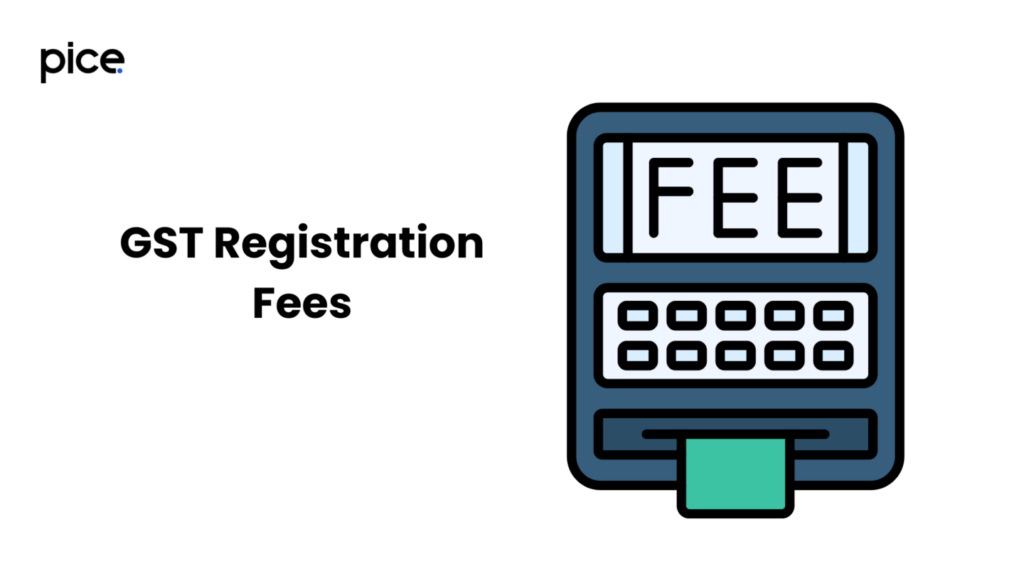
The GST registration fees vary based on the state and type of business. Proprietorship firms have to pay GST registration fees ranging between ₹2000 to ₹10,000 while partnership firms have to pay around ₹3000 to ₹12,000. Companies, on the other hand, have to pay around ₹3000 to ₹15,000 for GST registration.
Conclusion
Now that you know the different types of GST registration processes, you can opt for the right process based on the type of your business. Further, you can opt for GST registration based on your residential status, considering whether you are an Indian Resident or Non-resident Indian.
💡 If you want to pay your GST with Credit Card, then download Pice Business Payment App. Pice is the one stop app for paying all your business expenses.







